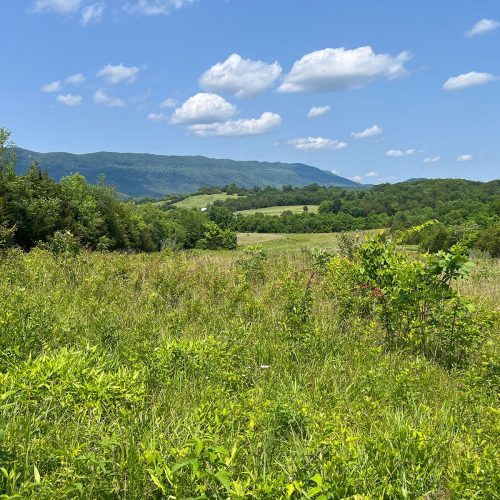Ahhh Tucson, I do love you – but lately that love has begun to leave a bitter taste in my mouth. *laughs
My dog, Teddy, has contracted Valley Fever. (I just found out today.) Most people outside of the southwest probably have never heard of it but it’s very prevalent here. While reading the information below (from the University of Arizona Health Sciences) keep in mind that not all symptoms are typical: For instance, Teddy didn’t have a fever and some of his other symptoms mimicked a cold or allergies or even acid reflux.
Another big problem is that the tests for Valley Fever aren’t 100% accurate. Test your dog too soon and it’ll more than likely come back as negative. I heard from another pet owner who said that his dog was tested twice – and both times were negative – only after the symptoms became severe did they get a positive test result. That poor dog lost an eye and is on medication for the rest of it’s life.
So now I wait for my anti-fungal prescription to be filled, which he’ll have to take twice a day for 3 months with ongoing testing. *sigh
I’ll keep you posted!
So what is Valley Fever?
Valley Fever is caused by a fungus (coccidioides) that lives in the desert soil in the southwestern United States.
Like people, dogs are very susceptible to Valley Fever. Dogs primarily contract Valley Fever in the low desert regions of Arizona, New Mexico and southwestern Texas and the central deserts of California. Dogs accompanying people traveling through these areas or wintering in these warm climates have about the same chance as their owners of being infected.
The life cycle of Coccidioides
As part of its life cycle, the fungus grows in the soil and dries into fragile strands of cells.
The strands are very delicate, and when the soil is disturbed – by digging, walking, construction, high winds – the strands break apart into tiny individual spores called arthroconidia or arthrospores. Dogs and other animals mainly acquire Valley Fever by inhaling these fungal spores in the dust and air. The dog may inhale only a few spores or many hundreds.
Once inhaled, the spores grow into spherules which continue to enlarge until they burst, releasing hundreds of endospores.
Each endospore can grow into a new spherule, spreading the infection in the lungs until the dog’s immune system surrounds and destroys it. The sickness Valley Fever occurs when the immune system does not kill the spherules and endospores quickly and they continue to spread in the lungs and sometimes throughout the animal’s body.
Symptoms
The most common early symptoms of primary pulmonary Valley Fever in dogs:
- coughing
- fever
- weight loss
- lack of appetite
- lack of energy
Some or all of these symptoms may be present as a result of infection in the lungs. As the infection progresses, dogs can develop pneumonia that is visible on x-rays.
Sometimes the coughing is caused by pressure of swollen lymph nodes near the heart pressing on the dog’s windpipe and irritating it.
These dogs often have a dry, hacking or honking kind of cough and the swollen lymph nodes can be seen on x-rays.
When the infection spreads outside the lungs, it causes disseminated disease.
The most common symptom of disseminated disease in dogs is lameness; the fungus has a predilection for infecting bones of the legs in dogs. However, Valley Fever can occur in almost any bone or organ of dogs.
Signs of disseminated Valley Fever can include:
- lameness or swelling of limbs
- back or neck pain, with or without weakness/paralysis
- seizures and other manifestations of brain swelling
- soft abscess-like swelling under the skin
- swollen lymph nodes under the chin, in front of the shoulder blades, or behind the stifles
- non-healing skin wounds that ooze fluid
- eye inflammation with pain or cloudiness
- unexpected heart failure in a young dog
- swollen testicles
Sometimes a dog will not have any signs of a primary infection in the lungs, such as coughing, but will only develop symptoms of disseminated disease, e.g., lameness, seizures. Very few of the signs of Valley Fever are specific to this disease alone and your veterinarian will do tests and x-rays to determine that your dog’s illness is Valley Fever and to rule out other causes.
Treatment
In most cases, a dog ill enough from Valley Fever to be seen by a veterinarian will require treatment with antifungal medication.
- Courses of medication are usually extensive, averaging 6-12 months.
- Dogs with disseminated disease in bones, skin, or internal organs usually require longer courses of medication.
- Central nervous system (brain or spinal cord) involvement frequently requires lifetime treatment with medication to keep symptoms from recurring.
Oral antifungal medication in the form of twice daily pills or capsules is the usual treatment for Valley Fever.
Prevention of Valley Fever in Dogs
Currently, there is no sure fire way to prevent Valley Fever in pets short of never residing in or traveling through the areas where the fungus grows. Valley Fever endemic areas are among the fastest growing regions in the country, which makes encounters of animals and people with the fungus a likely event.
Things you can do to reduce the likelihood of your dog’s exposure to the fungus:
Avoid activities that generate dust, reduce digging behavior by dogs, prevent sniffing in rodent holes, and keep dogs indoors more than outdoors. Treating the soil is currently not practical as the fungus lives in spotty areas and can live up to 12 inches deep in the ground. Yard ground cover that reduces dust, however, is helpful: grass and deep gravel or other dust-controlling cover.
A vaccine is under development.
It is possible a vaccine will be available in the future to prevent Valley Fever or make it only a very mild illness in dogs. Vaccination against Valley Fever would be very useful for animals traveling to places like southern Arizona and southern California as well as for those dogs that live in these places.




6 thoughts on “Valley Fever and Teddy”
So sorry about your dog. I sure hope he gets over it. I have seen where people have had something like that on “Monsters Inside Me” on TV and they usually live in Arizona.
Thanks Tita. I just picked up his prescription, and hopefully I will see noticeable changes within the first 30 days. I’m pretty confident we caught it early enough that he’ll get over it in no time. 🙂
Hi Hillary! I just found your blog and read about your dog Teddy. I hope he’s over this Valley Fever stuff. I never knew anything like that existed! Thanks for sharing the Valley Fever information and I will continue to follow you on mybuzzabout!
Thanks Kay! It’s good to see you again. Hope all is well!
Hi Hillary!!! I almost got to where you were last year and missed you once again ☹️ I still have never seen Colorado!
One of these days I’ll stop by for certain!!!
I love all the new photos too!
Hi Larry!
I’m glad to hear from you! …and it’s not easy catching up to me – I’m elusive! lol! I’m glad you like the new photos too! Teddy’s very photogenic. 😉